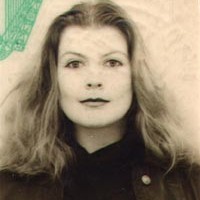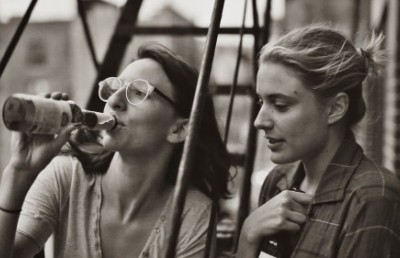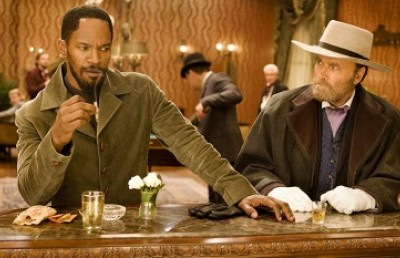When Women Wrote Hollywood: Essays on Female Screenwriters in the Early Film Industry
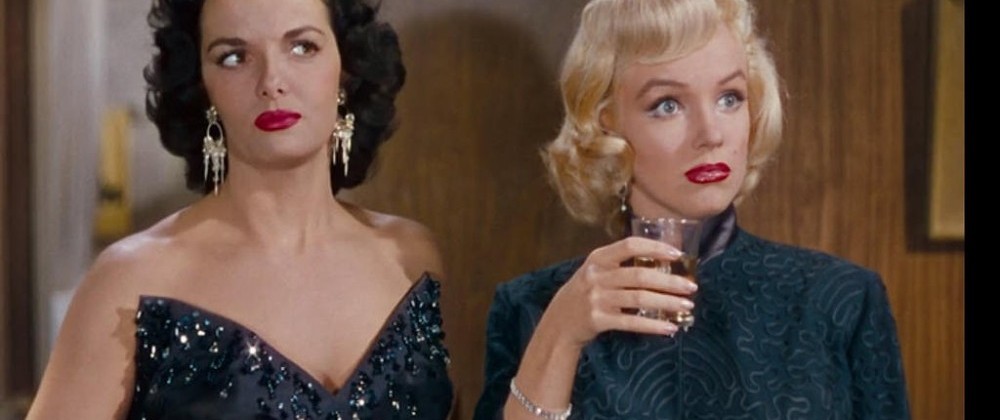
When Women Wrote Hollywood: Essays on Female Screenwriters in the Early Film Industry
Edited by Rosanne Welch
Foreword by Cari Beauchamp
McFarland & Co Inc New York
pp. 221
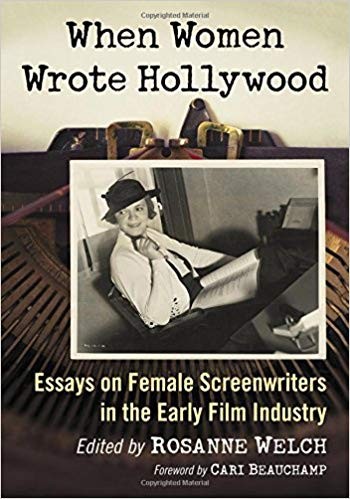
This new collection of 24 essays on women screenwriters offers fascinating insights into early Hollywood and beyond. Editor Rosanne Welch (herself a screenwriter) set her Stephens College MFA History of Screenwriting students a task: to outline the achievements of those screenwriters who have been systematically erased from the majority of film studies. The foreword by film historian Cari Beauchamp sets the tone in the first sentence, reminding us that “almost half of all films made before 1925 were written by women” (1). This volume is a sparky assemblage which not only acts as a corrective to conventional screenwriting historiography, it highlights careers which were multi-faceted, wide-ranging and virtually Renaissance in their scope.
The question of credits and authorship arises in the first essay. Writer Adela Rogers St Johns (1894-1988) was “the prototype of female reporters in film,” the model for Hildy Johnson in His Girl Friday, a wily journalist who wanted a family but really couldn’t resist a good story. She was ‘Mother Confessor to Hollywood’ through the pages of _ Photoplay_(12) with a singular approach to writing about the film business —“she saw beyond the glamour” (13). It was Rogers St Johns’ court reporting and her lifelong work for W.R. Hearst cultivated through her father, legendary criminal defence attorney Earl Rogers (immortalised by Lionel Barrymore in A Free Soul (1931) from her 1927 memoir-based novel) that sustained her polymath activities and portrayal of strong women. This essay is the first in the collection and it already addresses the thorny issue of attribution when Rogers St Johns gets ‘story by’ credit. Her first Hollywood-on-Hollywood film The Skyrocket (1926) adapted from her story by Benjamin Glazer was soft on its subject. She would become most acclaimed for What Price Hollywood?_(1932) which was a tougher version on which she shared story credit with Louis Stevens. (It would of course be re-imagined as the multiple versions of _A Star is Born). Jane Murfin (also treated here) was one of the screenwriters on a production directed by George Cukor, and it was he and producer David O. Selznick who got all the kudos. The Single Standard (1929), a vehicle for Garbo from her novel, which espouses gender equality, was a success wholly ascribed to director John S. Robertson. Author Sarah Amble Whorton assesses her subject’s curiosity, sharp writing skills and storytelling prowess and her capacity for writing “candy-coated social awareness films” (16). She had a significant collaboration with actress Dorothy Davenport eventually leading to Red Kimono (1925) directed by Dorothy Arzner, an important figure for women writers of the era. Rogers St Johns was an important influence on Frances Marion, the subject of Cari Beauchamp’s magisterial biography (and who won the Academy Award for The Champ the same year as Rogers St Johns and Murfin were nominated for What Price Hollywood?); and June Mathis. She would continue writing as a reporter until the late Forties, while her books included How To Write a Story and Sell It . She would eventually be awarded the Presidential Medal for Freedom.
June Mathis (1887-1927) was a writer and editor best known for the screenplays for Blood and Sand (1922) (co-directed by an uncredited Dorothy Arzner) and Ben-Hur (1925) which was in fact rewritten by Bess Meredyth, who was sent to rescue the production on location in Italy. Meredyth’s dedication was such that when an on-set accident occurred with the potential deaths of extras she smuggled rolls of film to Paris to evade detection by police. Like several of this book’s subjects, Mathis began as an actress and graduated to heading the scenario department at Metro in 1918, the first woman to occupy an executive position in the film industry. She is distinguished among early screenwriters for her dedication to learning about filmmaking, pioneering efficient scheduling and creating the first proper shooting scripts. She oversaw over one hundred productions and simultaneously wrote screenplays which had unconventional sexual elements (102). She had an eye for talent on the page and the screen and insisted that the novel The Four Horsemen of the Apocalypse (1921) be filmed with Rudolph Valentino, her discovery, in the lead, forging a deeply platonic relationship with the world’s biggest film star. Her penchant for adaptation and her shocking early demise have not diminished her achievements of expert melodrama writer (and sharp dialogue) and Lauren Elizabeth Smith captures her impact as a woman filmmaker chiefly responsible for the male-oriented action epic (her re-editing of the alleged fiasco that was Erich Von Stroheim’s 42 reels of Greed (1924) notwithstanding).
Bess Meredyth (1890-1969) also commenced her three-decade long showbusiness career as an actress, first in vaudeville and then as an extra at the Biograph company and later for D.W. Griffith for whom she wrote one- and two-reelers, as Sydney Haven describes this feminist role model and screenwriter whose career successfully transitioned to the talkies. In 1914 she appeared with fellow pioneer Jeanie Macpherson (1886-1946) in The Desert’s Sting and left with husband Wilfred Lucas set up their own company after they co-directed her screenplay The Romance of Tarzan (1918), starring Elmo Lincoln. A brief stint in Australia afforded her the freedom to edit and title her films, while on her return to Hollywood she worked as a full-time Scenario Writer across several genres (57)., She later married director Michael Curtiz which extended her (uncredited) influence and her association with Irving Thalberg at Metro gave her great opportunities as she parlayed her talents across a range of work including Wonder of Women_(1929); _A Woman of Affairs (1928), which necessitated writing metaphorically to get around the strictures of censorship; and Metropolitan_(1935). However she is principally remembered now for male-oriented work like _Sea Beast (1926), her adaptation of Moby Dick starring John Barrymore. A co-founder of the Academy of Motion Picture Arts and Sciences in 1928 along with Jeanie Macpherson, the curtain was brought down on her career as master adapter with the death of Thalberg, the fate for many whose careers he supported. If some of her screenplays were not as tightly plotted as one would wish, she established a career as a working mother who realised that to succeed she had to act like a man – be tough, argue her corner with outrageous wit and finally be the power behind Curtiz’s throne which means she influenced the writing of Casablanca_(1942). Her last credit was for _The Unsuspected (1947).
Best known for her association with Cecil B. DeMille, Jeanie Macpherson’s (1884/6/7?-1946) origins were obscured by conflicting accounts, principally to do with her mother’s penchant for a luxury lifestyle and the means by which she allegedly acquired it —deception and theft, albeit at a very exclusive level of society. Macpherson’s family mingled with the literary and the bohemian, Oscar Wilde just one among the writers in their circle, which centred in Paris, where Macpherson appears to have received her early education. Trained in opera and dance, she started out as a dancer and performer on Broadway, with little success, then making her first screen appearance by 1908. Macpherson’s screenplays, finds Amelia Phillips are thematically distinguished by a distaste for elitism, an emphasis on the need for hard work, the complexity of love and strong women, her “female characters … are fully formed and human” (30). She was widely acknowledged to be the writing power behind DeMille, for whom she wrote The Ten Commandments (1923) and The King of Kings (1927) and with whom she was involved in a decades-long working relationship as well as an extra-marital relationship, as one of his mistresses. However, Phillips says, “She was an equal. Close in age to DeMille, she was able to stand up to him and challenge him the way no other in the industry could. It is rumoured that Macpherson did not tolerate the reality of his other mistresses, either” (30). She complemented DeMille because she saw things from a different perspective. Macpherson was anti-fundamentalist at heart and despite her reliance on stories from the Bible, “she expanded upon them and found their humanity” (30). She could also write a tough film, such as The Godless Girl (1928), dealing with juvenile delinquents. Phillips concludes that Macpherson’s films “shine with honesty and heart. She spoke from her heart, drew from her life, and her characters and films reflect that fact” (33).
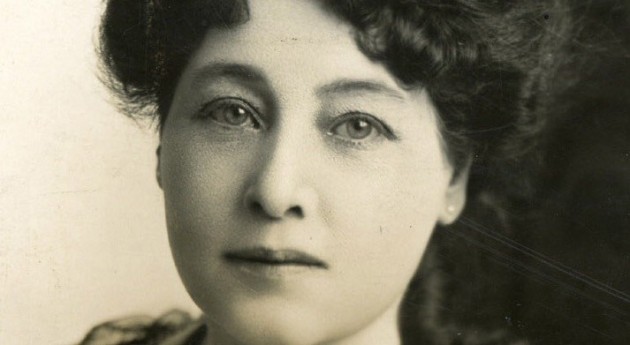
Alice Guy Blaché
From Khanisha Foster‘s account of the world’s first film director Alice Guy Blaché (1873-1968) whose best known work is Shadows of the Moulin Rouge (1913) we learn about the scientific approach to cinema –from her background at Gaumont during the drive to mechanization and the evolution of sound (Chronophone) and colour, years before they were commonplace. She was Gaumont’s first head of film production in 1897. Her films begin as actualities and move to comedy and acrobatics, including chase scenes and gender swapping, potentially the first fictional works onscreen, as she was “among the first to make the transition from the cinema of attractions to narrative cinema” (51). Her move to the United States with husband Gaumont sales representative Herbert Blaché saw her run their company (Solax) in Chicago where she concentrated on “cowboy stories, military films and melodramas” (52). She pursued her tendency toward realism, flipping gender norms in The Consequences of Feminism (1906); showing pregnant women and oral fixations; using humour to subvert expectations; and, when she hired an African-American cast for A Fool and his Money (1912) she was the first filmmaker to do so. A scientist and an artist whose films portrayed women as heroes, a critic of the time stated, ‘ “This is a woman’s era, and Madame Blaché is helping to prove it without any fuss at all’” (53).
Broadway playwright, story editor, screenwriter, producer and director Marion Fairfax (1875-1970) is introduced by Sarah Phillips as “an everywoman example of the plight of female screenwriters of the silent era. From the origins of her career through her mysterious disappearance from the Hollywood scene after the advent of talkies, there is little information available on her work as an actress, playwright and screenwriter and the information that is available is not consistently correct” (69). This is the crux of the researcher’s problem. Joining her husband on stage, she started to write plays with roles for both of them and her big 1912 hit The Talker was followed by a period of illness which lasted two years and was followed by less successful plays. She then started working in Lasky’s company where the scenario department was run by William DeMille. After working in several different genres, she co-wrote The Blacklist (1915) with him and this led to a five-film run, with DeMille directing their screenplays. Fairfax was writing an average of six films a year and probably her best known title as director is The Lying Truth (1922) when she was working with Marshall Neilan whom she had known from their time on Broadway and she set up her own company. Phillips says that “a commentary on small-town politics, and also the hotheaded ability to jump to conclusions about anyone, seems to be a running theme in Fairfax’s scenarios” (73). She retired in 1927, probably due to ill health. Due to a combination of financial pressures, distribution issues and a recession which led her to taking freelance work including on the smash hit Conan Doyle science fiction adaptation The Lost World (1925), her company had folded, in common with those set up by writer and editor Eve Unsell (1888-1937) whose most acclaimed work is probably The Ancient Mariner (1925) and writer/director Ida May Park (1879-1954) best known for The Flashlight (1917) and who later wrote a scriptwriting manual. Unsell was a former actress who rewrote Frederica Sagor Maas’s screenplay for The Plastic Age (1925), for which she was credited and Maas was not, a project for B.P. Schulberg, one of the three major producers in her career of one hundred plus credits for stars like Lon Chaney, Baby Peggy and Mary Pickford. She learned the bones of plot working for the mother of Cecil B. and William DeMille and when she ran her own company it was ‘ “to bring filmmakers and authors to a new level of mutual understanding’ “ (83). Park also started out as an actress and joined Pathé as scenario writer where she joined her husband, the actor Joseph DeGrasse, before working at Universal where she is credited with forty-four films by 1919. Park and DeGrasse worked as the company’s second husband and wife directing team (with Lois Weber and her husband). Jackie Perez finds that Park’s films mostly “feature a female lead who begins the story as poor, beaten, and/or single and receives a fairy tale ending” (134), a narrative form that appears repeatedly concluding in “virtuous women turning bad men’s lives around” (135). She directed fourteen films and mentored other women, writing that instinct was better than training as far as film directing was concerned.
Bestselling novelist, actor and producer Elinor Glyn (1864-1943) is remembered for coining ‘It’, a suggestive combination of animal magnetism and female allure, embodied by Clara Bow in the titular 1927 film. The entry on this infamous writer is appropriately sensational, a diverting account of a woman who played a huge part in how sexuality was conveyed in silent cinema, earning infamy for her romantic books, starting with Three Weeks (1907) which France Marion adapted for the 1924 film starring Aileen Pringle. She wrote an average of a novel a year and scores of short stories, and in Hollywood, where she was invited to work by Famous Players-Lasky [following their former partner Samuel Goldwyn’s lead on shifting emphasis to stories over stars, as Tom Stempel recounts in Framework 1991: 52], twenty-seven films were made from her books and screenplays. Her association with Bow continued with an adaptation of her novel Red Hair (1928) and her glamorous career was transcontinental and influential, which you might expect for a woman “with a moral compass the size of Canada,” as Amy L. Banks avers (94).
Actress, writer and director Lois Weber (1879-1939) was a key filmmaker of early Hollywood who made message (or ‘thought’) films which were not dependent on the historicising modes deployed by Griffith, Ince and DeMille. Instead, she made contemporary social problem films drawing on her past as a street-corner evangelist and social worker. Working with her husband Philip Smalley at Universal, and then at her own company, she created films with strong female protagonists that set out to tackle social justice and inequality. At one point she was the highest paid female director in Hollywood. As Chase Thompson states, “Weber used the medium to spread her morals, messages, and beliefs with the general public” (110). Nonetheless as society’s values altered, Weber sought to move with them and her writing style evolved with the times so that her 1920s films were more accurate pictures of real life as audience taste shifted to celebrity performers. She was an avid supporter of women directing and encouraged several actresses to make the creative leap to screenwriting and directing, including Frances Marion and Gene Gauntier.
The case of the first Kalem girl, actress and prolific screenwriter Gene Gauntier (1885-1966), offers an account of a peripatetic life as actress and writer pioneering foreign location filming, principally in Europe (and mostly in Ireland with the films she made there are known as The O’Kalem Collection) but also in the Middle East. Yasser Omar Shahin says, “In the career she wrote for herself, Gauntier contributed to motion pictures as a writer, producer, director and business owner” (114). She did the first screen adaptation of Ben-Hur (1907). Shahin writes that her dramatic storylines “often revolved around a single child, a single parent, love, the willingness to travel for a better life, and a romance in which a hero leaves or a hero comes back” (115). Her career continued until her retirement in the early 1920s. In 1928 she published her autobiography, appositely entitled, Blazing the Trail.
At times these essays become veritable potboilers in themselves. Lorna Moon (1886-1930) was the Scottish romantic novelist best known for Min and Bill (1930) from her bestselling novel Dark Star which Frances Marion got the studio to buy for a large amount of money, simultaneously ensuring Moon’s security and reviving Marie Dressler’s career. The Hollywood colony was small and the lives of these women intersected, sometimes uncomfortably closely. In a plot worthy of the more outrageous melodramas that she could herself have written, Moon secretly bore the illegitimate son of William DeMille, who was married to screenwriter Clara Beranger (1886-1956). That child was adopted by DeMille’s brother Cecil, who was also involved with Jeanie Macpherson outside his own marriage. Moon never met her son. As Elizabeth Dwyer suggests, perhaps the nomadic Moon needed to serially abandon her offspring to produce her romantic dramas, of which her own life had not a few. Dwyer comments, “Moon’s writing appears to be the most consistent facet of her life, yet even there she vacillates from a confident voice speaking on her own behalf to an artist struggling with doubts in her own abilities” (119). Best known for the film Mr Wiz (1927) starring Lon Chaney, which cemented his moniker The Man With the Thousand Faces, Moon collaborated with France Marion to adapt Anna Karenina as Love (1927) which starred Garbo and John Gilbert but it seems her screenplays were superseded by her novels and short stories.
Amanda R. Stockwell raises the issue of authorship again when she states: “To be a screenwriter means minimal credit; to be a female screenwriter means rare credit buried under years of condescension” (125). She calls Clara Beranger (1886-1956) ‘the unseen labourer,’ an apt recognition of her eighty silent film credits following her career as journalist and playwright. She worked at the studio that would become Paramount, collaborating with William DeMille but stuck to her guns, insisting on unhappy endings if that was what a scenario required with a “determination that films reflect real life situations and emotions in order for the audience to relate” (127). Stockwell finds that Beranger often gave “the finishing touch” to women in her screenplays and transitioned to talkies with work that was consistently charming and witty but like many women of the era suffered with the industrialising of the business and the male dominance that followed. She became a lecturer at the University of Southern California and spoke of the difficulties of adapting work from one medium to another. She wrote novels as well as a screenwriting manual, _Writing for the Screen_(1950),whose edicts hold true today.
Famous as writers in other fields, colour is introduced to the volume in the selection of Anita Loos (1888-1981), Lillian Hellman (1905-1984) and Dorothy Parker (1893-1967), when the focus rebalances the problem of credits attribution due to their extensive repertoires as novelists, short story writers and playwrights. Not only did their reputations smooth their entry to Hollywood, it was the raison d’être. As such the authors are afforded a rich landscape, enhancing the collection with a dynamic range of style and critique, freed by the extensive writings about these women elsewhere (not least by themselves). Despite her own claims to the contrary, Loos was a hard worker and a perfectionist, the studio’s most reliable craftswoman, “who shaped the integral role that intertitles played,” according to Toni Anita Hull (35). In Gentlemen Prefer Blondes she satirised sex and love, ironised relationships and represented herself in the character of Dorothy. Along with her husband and collaborator John Emerson, she wrote the manual How to Write Photoplays (1920). She had ceded seniority in their writing credits to appease his masculinity which was probably compromised in any case when they were working with Douglas Fairbanks. “Loos was inherently drawn to men that reminded her of her father, men who could not settle down and men who could never fully be hers” (41). She was an original member of the Photoplay Authors’ League, established in 1914. The controversial figure of Hellman is best known now for The Little Foxes (1941), adapted from her most famous play (with Dorothy Parker) but she was a confrontational playwright who constantly broke rules, and she was active in the battle to unionise writers, leading to her blacklisting. Kelley C. Zinge credits her “with ushering in the modern age with regard to equalizing gender roles, onstage if nowhere else” (152). Parker’s most famous contribution, A Star is Born (1937) confirmed her status as screenwriter and she also co-wrote the Hitchcock film Saboteur (1942). Fuelled by love, she co-wrote with husband Alan Campbell and as Elizabeth Dwyer says, she had “a firm grasp on both levity and despair” (164).
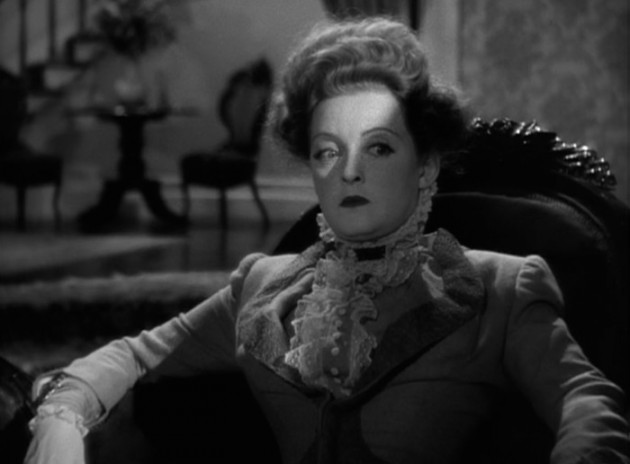
Little Foxes, starring Bette Davis, scr. by Lillian Hellman
Playwright Zoë Akins (1886-1958), like so many unmarried women who succeeded in Hollywood, was presumed to be lesbian, particularly following her successful collaborations with director Dorothy Arzner, to whom she was introduced by Ruth Chatterton, who starred in five of her films. This label did not impede her progress, as Sarah Amble Whorton informs us: “she staged a quiet rebellion against the status quo… she wrote strong women grappling to find their voice in a society determined to silence it” (191). These usually middle class females feature in Morning Glory (1932) and Christopher Strong (1933), giving Katharine Hepburn her first starring roles. The second of these films led to her parting company with Arzner because she did not care for compromise. Her beloved stage adaptation of Wharton’s The Old Maid was adapted for the screen by Casey Robinson (1939) with Bette Davis paired opposite Miriam Hopkins in one of the great women’s pictures. She wrote the screenplay for Camille (1936) but just as often her work went uncredited including on Show Boat (1936), My Man Godfrey (1936) and Conquest (1937). Akins’ arrival in Hollywood was due to “her mastery of language and her creation of vibrant female characters” but her gift for witticisms however “would distract from the dialogue and structural twists would complicate the act break” (186). It is her wickedly funny play The Greeks Had a Word for It (1930), better known as the film How to Marry a Millionaire (1953) sending up sex roles, morals and marriage, which earns her a place in the history books.
The name Jane Murfin (1884-1955) might be more or less forgotten nowadays but her dog Strongheart was the first canine film star (pre-dating Rin Tin Tin) and he got a line of his own food and a star on the Hollywood Walk of Fame, which certainly confirms the insignificance of women writers in Hollywood ecology. “Let us strive to relieve her of her obscurity,” announces Amy L. Banks, who traces Murfin’s life as a Broadway playwright, her collaborations with actress Dorothy Cowl and her astounding Thirties films, including her contribution to What Price Hollywood? (1932), Roberta (1935), a series of screenplays for Katharine Hepburn (The Little Minister, Alice Adams and Dragon Seed) and, of course, The Women (1939) co-written with Anita Loos, as well as Pride and Prejudice (1940), with Aldous Huxley. She directed her own films in the 1920s and later became the first woman production supervisor at RKO and then produced at MGM. She was one of the founders of the Screenwriters Guild whose rules she wrote when it became the Writers Guild of America. She also served as a director at the Academy of Motion Pictures, Arts and Sciences. As Banks claims, “she had skill, longevity, and enviable friendships” (203). She wrote original stories and adaptations with equal expertise, crafting star vehicles that have stood the test of time.
Writer and producer Joan Harrison (1907-1994) had a prolific career as script editor and then co-writer with Alfred Hitchcock, moving with him and his wife (and collaborator) Alma Reville to the United States to make Rebecca (1940) for David O.Selznick, the influential Jane Eyre —inspired romance which she helped adapt under exacting circumstances. When she went out on her own, producing at Universal Studios, she specialised in Gothic-infused noirs with women in jeopardy, a style popular in the post-war period in which psychologically-driven dramas played with gender and genre stereotypes. She was the only woman producer in Hollywood at the time. As Chelsea Andes claims, “Harrison helped to redefine the image of her entire gender” (174).
Further colour is introduced in the coverage of four contrasting husband and wife writing teams who are mostly acclaimed for romantic and married comedy screenplays and musicals, well beyond the birth of the industry, into the Thirties and through Hollywood’s Golden Age. Teasing out who wrote what is no simple task. Of the teams examined here, Sarah Y. Mason (1893-1980) and Victor Heerman are cherished for their Oscar-winning adaptation of Little Women (1933) an evergreen of American cinema and the peak of their careers. Mason pioneered film continuity for Lewis J. Selznick’s scenario department and after writing several comedies, Pamela L. Scott says that Mason’s collaborations with her husband (who directed until 1931) continued her screenwriting past the high point of the 1920s for women writers, with Magnificent Obsession (1935) their last significant film credit and their penultimate joint writing project. Scott references Anthony Slide’s unpublished oral history of Heerman which appears to reduce Mason’s contributions, despite her prolific career prior to their marriage.
Julie Berkobien finds that Frances Goodrich (1890-1984) and Albert Hackett, famous for audience-pleasers like Easter Parade (1948), Father of the Bride (1950) and Seven Brides for Seven Brothers (1954), were a beloved couple, high on the wish list of performers who loved to act in their scenarios. Starting as actors, both commenced writing for the stage, with a writing process “so intense that when they finished a scene they were unable to lay claim upon original ideas, always graciously giving one another the credit but never truly acknowledging or caring” (142). They were given Dashiell Hammett’s The Thin Man to adapt and the personae of Nick and Nora Charles were widely accepted as being extensions of the sophisticated couple’s own wisecracking urbane characters, which were dramatized in a long series. Their adaptation of Moss Hart’s Lady in the Dark was bowdlerised; while It’s a Wonderful Life was given to Jo Swerling who wrote a draft simultaneously, against Guild rules: they never saw the film, such was their disgust at how Frank Capra treated them. Their major work was the play The Diary of Anne Frank which Lillian Hellman advised upon to improve its construction. Garson Kanin, who was originally slated to direct, improved the realistic components but wasn’t credited despite the couple’s wishes. On their research trip to Amsterdam, one of the newspaper photos the trio saw clipped to Frank’s wall was of Ginger Rogers in Tom, Dick and Harry (1941) which Kanin had directed. The film was brought to the screen by George Stevens, with Millie Perkins in a role that everyone wanted Audrey Hepburn to play but because of her own wartime experiences in Holland (just 60 miles from Frank) she found the prospect too traumatising.
Bella (Cohen) (1899-1990) and Sam Spewack were both foreign correspondents in Moscow, uniquely qualified to comment on what dyspeptic Europeans thought of Americans. It is this journalistic background that singles them out amongst married screenwriting teams so it is wonderfully inapposite that their most highly rated screenplay should be My Favorite Wife (1940) (directed by one half of another famous screenwriting couple also treated here, Garson Kanin) and that they should be noted for their musical collaborations with Cole Porter supplying scenarios that positively fizzed with rapier-sharp wit. Laura Kirk points out that the multi-lingual Bella Spewack missed out on a big payday when she chose to cover the claims of Anastasia to the Romanov throne in sober analytical fashion. The couple’s reinvention of The Taming of the Shrew as musical comedy Kiss Me Kate, earned this appropriately turbulent married pair two Tonys before it was successfully filmed (with Dorothy Kingsley doing the adaptation). Their play My Three Angels was adapted (by Ranald MacDougall) as the film We’re No Angels (1955).
Ruth Gordon (1896-1985) was much older than her husband Garson Kanin and her Broadway acting career and the birth of her illegitimate son by theatre producer Jed Harris provided much of the rich tapestry behind her writing. Not only was the Gordon/Kanin marriage a model of equality, they dramatised such relationships in the four original screenplays they wrote together for the screen, establishing Katharine Hepburn’s persona of an independent career woman in those happy collaborations with director George Cukor, battle of the sexes comedies Adam’s Rib (1949) and Pat and Mike (1952). They had worked as playwrights prior to their marriage and their screenwriting career as a team only ceased when they stopped enjoying working together but they wrote on their own thereafter, as Rosanne Welch describes Gordon’s The Actress (1953) a fond recollection of her experiences as a young woman which she adapted from her play Years Ago featuring her regular collaborators, director George Cukor and star Spencer Tracy.
Ultimately these screenwriters’ lives share themes – survival, longevity, friendship— and biographical details which converge in the title of Mikayla Daniels’ essay on Frederica Sagor Maas (1900-2012), The Best Revenge is Outliving Them All and the writer of The Shocking Miss Pilgrim (1947) lived until the grand old age of 111, proving that dictum and commemorating her career in her autobiography. She had worked as story editor at Universal and then seen her writing credits disavowed, even for all the early Norma Shearer movies that she wrote. Her work on three Clara Bow films including It (1927) was not acknowledged. She and her husband lost everything in the Wall Street Crash. She was finally blacklisted for communist activities. As Daniels, asks, “How many writers have to disappear from the history books before the world takes notice? Credits are the only way to prove what you have accomplished in film” (66).
It is often through their own memoirs then that these women provide a truer account of early Hollywood, living long, prospering and telling it as it really was. Rosanne Welch reminds us that this is ”a collection of _her_stories about how these women lived, loved and created the cinematic stories that gave their audiences new ideas about life and love” (5). Recalibrating the voluminous accounts accorded the business’ founding fathers is a formidable challenge, rendered infinitely problematic by the issue of credits and extant prints beyond the purview of www.archive.org, which also derails the hopes of a complete filmography for each of the women concerned.
The combination of biographical detail with script analysis in these intertwining stories of female support, innovation and hard work, expresses the agony and ecstasy of creativity in a business environment that was quick to use women’s talents and just as fast to sideline them when men eventually got the hang of things. No longer just footnotes to a history created in the main by male writers, the women treated here spring to life on the pages of a book tracing an entire industry, with characters who were many years ahead of their time. It is part of a growing library of work charting women’s place in the evolution of screenwriting with the official version, framing their achievements and life stories within a vivid evocation of the birth of the new art. The coherence of the work derives from the shared contours of these women’s lives and their spirit of entrepreneurialism, gumption and daring. This is an invaluable resource that can take its place alongside important work by Marsha McCreadie, Lizzie Francke, Tom Stempel and the expansive Women Film Pioneers Project at Columbia, graciously acknowledged throughout. Functioning as tribute, history and index to a generation of fierce and feisty women, this is an educational tool sure to inspire further vigorous debate and rigorous research, proving that a pioneering woman’s work is never done

